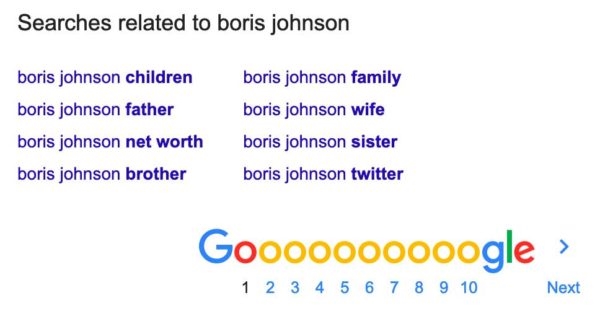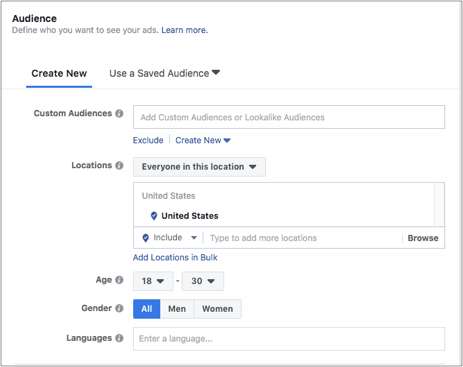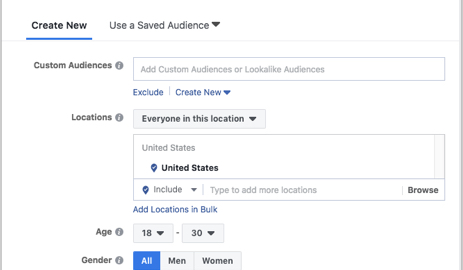— August 2, 2019

kaboompics / Pixabay
You’ve just finished your latest blog post. You’ve dedicated hours to create it. But what happens if nobody reads it? Without a solid content promotion plan in place, your readership may never increase. In fact, you should be spending more time promoting your posts than you spend actually writing them. Here are the main points:
- Make your post exceptional, or don’t post
- Research and then write your post. Make sure it is the best it can be for your audience.
- Build relationships with target publishers ahead of time
- Reach out to publishers to get a mention or a link
- Promote your post using Facebook ads if it makes sense to do so
- Post on social media and…
- Set social media for your post on autopilot so posts go out regularly
- Use a paid promotion of your post on Facebook if it makes sense
- Contribute to groups and include a link to your content when appropriate
- If you mention experts in your post, let them know
- Setup a refresh schedule for your post with calendar items
There are many ways to promote your blog, but the first step is to create exceptional content, although you may already do that. The main point to keep in mind is to make your content simply better than everything else out there. Google the phrases people might use to find a post like yours, study the top three or four posts already there, and strive to make yours better, more up-to-date, and well… just better in every way possible.
Once your content has an authoritative voice, and offers comprehensive coverage of the topic, and has been published, it’s time to ramp up your promotional efforts.
Promoting your blog will help you to reach more people, faster. You’ll make sure that the right people—the people your blog is intended to help—are reading your posts.
This article will cover the most effective ways to promote your blog to maximize exposure and grow your audience. Use it as a checklist for the next blog you write and watch your page views increase!
Either make the post exceptional, or don’t publish it
Your promotional efforts will be far more fruitful if you have an exceptional piece of content to work with. Even if you can get your content in front of the right audience, if it’s not up to par with their expectations, they’ll quickly leave your page for one with more to offer. That’ll cause a “bounce”.
A bounce is when someone clicks on a search result and then jumps back to the search result page after glancing at your content. Google may perceive this as an indicator of low quality content, especially if the person doing the search finds another post for the same search but spends a lot of time there.
Here are a few tips to help your content shine online.
Before blogging, walk away from your computer
- First, put the keyboard away. Close your laptop. While you’re at it, you might as well put away your phone too.
- Imagine what kinds of people will read a post like the one you are considering.
- What are they curious about? They’ll want to satiate their curiosity. Think of the types of searches the people you are imagining might use to find similar information to what you’re planning to write about.
- Now – get your computer out. Fire up a browser, and Google those search phrases.
- Read the top three or four posts that are somewhat similar to what you’re planning to write. If there is nothing like yours, great! But odds are there will be something at least tangentially similar.
- Make notes on what existing articles are missing, and also what’s great about them. For example, would diagrams, more detail about a certain topic, or perhaps something more emotionally compelling make them better? What kinds of headlines and subheadings to they use?
- Now, start writing your blog post. Your goal is to create something obviously better. If you can’t think of how to do that, perhaps you should rethink the post your are contemplating. After all, if you write something on par with existing content it has a lower probability of standing out and attracting traffic.
Use key phrases your audience would use
This isn’t about “gaming” Google by awkwardly inserting keywords wherever possible. Search engines today still rely on keywords and phrases, but they also use other methods to understand what a blog post is about. Artificial intelligence now strives to understand the point of a given piece of content, even without key phrases. Still, key phrases do help a great deal.
How Google highlights keywords in search results
Look at the image below to get a better understanding. Keywords are not always displayed directly in search results – but they often are. If you were to perform a search for “Boris Johnson Brexit” you would probably notice that those three words are often found in the headline and snippet (description) found in search results.
Where to find both subjects to write about and search terms

Where do you find key phrases? Google’s searches related to section is a great place to source other keywords to include in your content. The image above shows related searches for Britain’s Prime Minister. That is, it shows other top search queries that relate to the one that you originally searched. Google doesn’t always include related searches at the bottom though.
Another place to find related subjects and search terms to write about is a website called Answer the Public. The site tells you the who, what, when and where type queries people are curious about. It returns the answer to your query visually, like this:
AB test headlines and content
Your blog post doesn’t have to be a “one and done” activity. It’s interesting to try different headlines over time to see which ones perform better. The same goes with sub-headings in your blog posts. This is called “AB testing” or “split testing”. When you do this, compare traffic and search traffic to the post over time. In the end, choose the best combination. We find it best to keep a schedule of when headlines are changed. Some content management systems, like the one that runs the Reputation X website you are reading, Hubspot, let you AB test more easily.
Include powerful / informative visuals in your blog posts
People skim. You’re probably skimming this post right now. You may not even have read the last sentence because you are skimming so much! The fact us, most people respond better to visuals than to large blocks of text. To take advantage of this, spice up your content by including images, charts, and videos to back up your main points. You can source free stock images from places like Pixabay and Unsplash. If you are good at Adobe Illustrator or similar vector programs you can download templates like those found at Infograpia that for one price gives you hundreds of customizable vector graphic templates you can use for your blog posts.
Use irresistible headlines
We are not suggesting you use clickbait headlines like the one in the image above. but taking the extra time to write headlines that compel people to click your article is always worth it. If you can’t even get people to click your link, then nobody will ever read your article. The same goes for subheadings. Since most of your readers will simply be skimming your article on their phone, engaging subheadings can keep them on your page longer. We have an article on “clickbait” headlines here, and, again, while we don’t suggest creating those types of headlines (as a rule) you can learn about how and why they work.
Include internal links to related content on your site
Internal links are a great way to cross-promote your other articles. Internal links keep your readers on your website longer by leading them to other pages of interest. They are also valuable for your SEO efforts. For example, notice how there is a link to some great SEO content on our site at the end of the previous sentence?
Why do this? Google uses internal links to create relationships between content and to assign value to links, which can help your page rank better. Internal links are not a replacement for links to your blog post from highly rated, topically relevant, third-party sites, they augment them though.
How to promote every blog post
This is what you should do right after you post every blog post you create.
Every post should have at least one good link to it
Google counts every good link to your blog post as a “vote” for how relevant it is. Generally, more of the right links translates to higher rankings. It’s more complex than that, but that’s the idea. Every blog post you publish should have at least one really good link from another site. When you reach out to publishers letting them know you have a great article that they might reference you are in effect asking for a link. If they provide the link you are good to go.
But what is a good link and how to you get one? The site that links to your blog post should have the following attributes:
- It should be a site about the subject you are writing about
- The link shouldn’t be a stand-along link if possible, instead, it should be in the context of other related content. For example, embedded in an article about the subject you are writing about.
- The page linking to your blog post should itself have at least one link to it.
- The anchor text, or text in which the link is embedded, should relate to your content in some way. For example, if your post is about “cat juggling” then the anchor text could be “how to juggle cats” or “why you shouldn’t juggle cats”, etc.
How do you get these publishers to mention your fantastic article? Read on.
Reach out to publishers to let them know about your post
Now that you’ve spent some time refining your content, it’s time to get it shared with the masses. You are not sharing the article with the masses at this point – you want other publishers to do so. But sharing it with “the masses” starts with sharing it with publishers that make sense. Although it can be intimidating to fire it out into the world, don’t worry. If your content adds value and offers a unique perspective on your topic, people will want to read it and, hopefully, share it with their audience too!
Offer to contribute your knowledge and expertise to their blog
You can also offer to provide publishers a guest post, or “guest contribution”. That’s when you write a blog post for another website and they publish it. Often these types of content have embedded links back to your site, and your original blog post. If you write the post, you can usually add a link referencing your post on your blog. This isn’t a duplication of your post, its a post similar to yours that references it with a link. You can learn more about guest posts here.
Keep in mind that publishers receive a lot of requests. Using an impersonal mass-email approach isn’t a good idea. If you’re going to reach out to a publisher about your content, make the message short, concise, and demonstrate how a mention and or link from their publication will benefit them and their viewers. Remember: it’s not about you – it’s about how you can help them.
Find the right people to pitch
The last thing you want to do is blindly send out your blog post to a list of random people. Instead, take the time to carefully curate your email list and grow it over time. Here are a few types of email lists you should grow:
- Subscribers. Start with growing a subscriber base by including email opt-ins on your blog and social channels, and send out blog updates to this list. If you have a list of people interested in your thoughts, products, or services, email them about your post if appropriate. This can get you immediate traffic. Remember – don’t email the whole post, just a teaser and a link to the post. Why? Because if you email the whole post they won’t have a reason to click through and read yours.
- Influencers. Tools like Buzzsumo or Google Alerts can help you to build lists of people that are sharing content similar to yours. Send your article out to people with similar interests and make sure to emphasize the added value in your articles. BuzzSumo even has an Influencers tab to make it easier although it is a bit expensive for many at $ 99 per month.
- Experts quoted in your article. Don’t you love it when someone mentions you as an expert in something they write? Well, so does everyone else. If you mention a person or their work in your article, let them know! Send a quick email alerting them of the mention, and gently suggest they share the article with their social networks.
Thinking about taking a shortcut by buying a list? It’s generally a bad idea to buy a list from a list broker. It can easily be considered a spam tactic.
Build relationships with publishers ahead of time
One helpful strategy for a successful outreach campaign is to build relationships with the people you’re communicating with in advance. Since people are more likely to respond to someone they’re already familiar with, it’s worth dedicating time to “get to know” the people you’re pitching your blog to. Here’s how:
- Engage on social media. Sharing, liking, and commenting on social media posts can go a long way when you’re trying to establish a relationship with a fellow blogger or influencer. Don’t take, just give. Don’t ask for anything… at least at first. This shows you are genuinely interested in your niche and that you stay up-to-date with news and events. As a bonus, this also increases your own visibility since other people can see your activity on social media and potentially click on your profile to find out more about what you’re up to online.
- Comment on their blog. Did you enjoy a blog they wrote? Do you have anything extra to contribute that they may have missed? Leaving a quick comment on a blog is a quick and easy way to get someone’s attention. Maybe they’ll even reply to your comment and start a conversation. Dropping links in their comments section to your blog is generally frowned upon unless there is a very good reason to do so that will enhance what they’ve written.
Email pitch examples for bloggers (templates)
Once you’ve refined your email lists, it’s time to put them to use by sending out your blogs. Here are some sample pitches that you might send to each of the groups described above.
- Subscribers. These emails can be quick and simple. It’s usually enough to just include the first couple lines of the blog and a link to read more.
Hey [Name],
I’d like to quickly share with you my latest blog post. Hope you enjoy it
[Title and link to blog]
[First couple lines of blog] Click to read more.
Thanks,
[Your Name]
- Influencers. You hear the word “influencers” all the time today. We like the term by coined by master marketer Seth Godin, “Sneezers” over a decade ago. They’re basically influencers, but the word has, to us, a funnier visual. Seth says “Sneezers are the ones who when they tell ten or twenty or 100 people about an idea.” The goal of emailing influencers (sneezers) is that they will share your content. This can be very difficult to achieve, but once you start establishing relationships and improving your authority online your chances of getting your posts shared will improve.
Hey [Name],
I saw you shared [Article they shared on Twitter], and it inspired me to research more about the subject and to create something of my own that expanded on the topic.
I’m a huge fan of the original article, and hope mine offers a little more information on [Mention topic unique to your article].
Here’s the link, if you’d like to check it out! [Link]
If you find it valuable, feel free to share it. 🙂
Thanks!
[Your Name]
- Experts quoted in your article. Any time you mention someone else in your article, you should send them a quick email letting them know that you’re a fan of their work and have shared it in your blog. Who doesn’t like receiving praise anyway? Maybe they’ll even share your article.
Hey [Name],
I love your blog on [Insert topic]. I gave it a mention in my most recent blog post: [Link].
So now you’re famous-er 🙂
Thanks!
[Your Name]
Pay influencers to say nice things
Sometimes you have to pay. You can pay influencers to spread the word about your brand or post. There are rules about how to do this the right way. When you hear the word “brand ambassador,” that’s often a paid influencer. Influencer marketing works because it’s more like PR than advertising, or seems to be. There are various types of influencers ranging from bloggers to celebrities.
Of course, free is almost always better. Check out this great post about how to get influencers to spread your message for free.
Post on Social Media
You should also take advantage of free ways to share your posts on you social networks. Share every blog you write. Not just once, but multiple times. Get into the habit of writing your social copy when you write the blog itself. Here are some tips to write engaging social posts:
- Relate to your audience. Write your social posts in a way that will best serve your audience. Use words like “you” and “your” to direct the posts to them. Make sure your tone and voice is consistent with your overall brand and online presence.
- Ask questions. Create posts that encourage your followers to respond with their opinions and feedback.
- Keep it short. Only include the most important aspect of your blog in your social posts. Use an interesting statistic or helpful tip to encourage people to click your link and read the full article. The first 3-4 words of your post are most important, so make them special.
- Instill a sense of urgency. Convince your followers that they need to act quickly on whatever your post is about.
- Use the right hashtags. Make sure that people that aren’t following you (yet!) see your post by including a couple of relevant hashtags. Tools like hashtagify can help you find the right ones.
- Tag industry leaders. Just like hashtags can help you increase your reach, tagging industry leaders can also. It’s also a good idea to tag people who are referenced in your article or, if you’re a business, to tag the writer of the post and tap into their network as well.
- Include images. Images will help your post stand out in the feed.
Social media – put it on autopilot
Don’t just publish your post and tweet about it once. Set it up on autopilot. CMS systems like Hubspot have this built in, but solutions like HootSuite work very well too. There are even systems like MeetEdgar that will automate your social media messaging for the post.
Paid promotion with Facebook ads
Facebook ads are a relatively inexpensive paid option to get your content in front of the right readers. There are more than 1.5 billion people using Facebook every day. This is a massive audience that can be segmented pretty much any way you’d like. If you need to market to the underwater basket weavers of the world, you could with Facebook. But you also want to make sure you’re reaching the right audience with the right ad at the right time, so developing a Facebook ad strategy is critical.

Use LinkedIn and other groups
Don’t stop with sharing it exclusively on your feed. Consider joining relevant groups and pages and posting your blog there as well. But be careful with this. You can’t just join a group and blatenty post promotional posts about your blog. Become an active member of the group. Read other’s posts and include links to your articles when they are relevant answers to questions. Remember, the purpose of your blogs are to solve specific problems, so use these opportunities as a chance to do just that.
Use Quora to promote your post
You’ve made sure your content is better than anything out there – great! Be proud of it. Then, go to Quora.com and and search for the subject of your post. You may find a question or two. Write a helpful answer to the question being asked, and include a link to your blog post within your answer. Google won’t follow Quora links (they are considered “nofollow”) but people will. It’ll add traffic to your post. See below for an example of how links in Quora look.
Setup a refresh schedule for your post
Every blog post you create should be refreshed on a regular basis. If you don’t set a calendar item to do so you will forget.
How often should you refresh a blog post? It’s up to you, but we recommend updating your most popular blog posts every three months and the rest every six months.
How do you know how popular your blog posts are? If you use an advanced CRM you can look to your analytics to see which posts are more popular. Another great option is the tried and true Google Analytics.
Conclusion
You spend a lot of time writing and caring for your blog, so don’t shortchange yourself by skimping on promoting your awesome content. Remember, spend more time promoting your post than you spent writing it and you’ll be halfway there.
Did we miss any other ways to promote content online? Let us know in the comments if you’ve used a tactic not described in this article!
Digital & Social Articles on Business 2 Community
(78)






